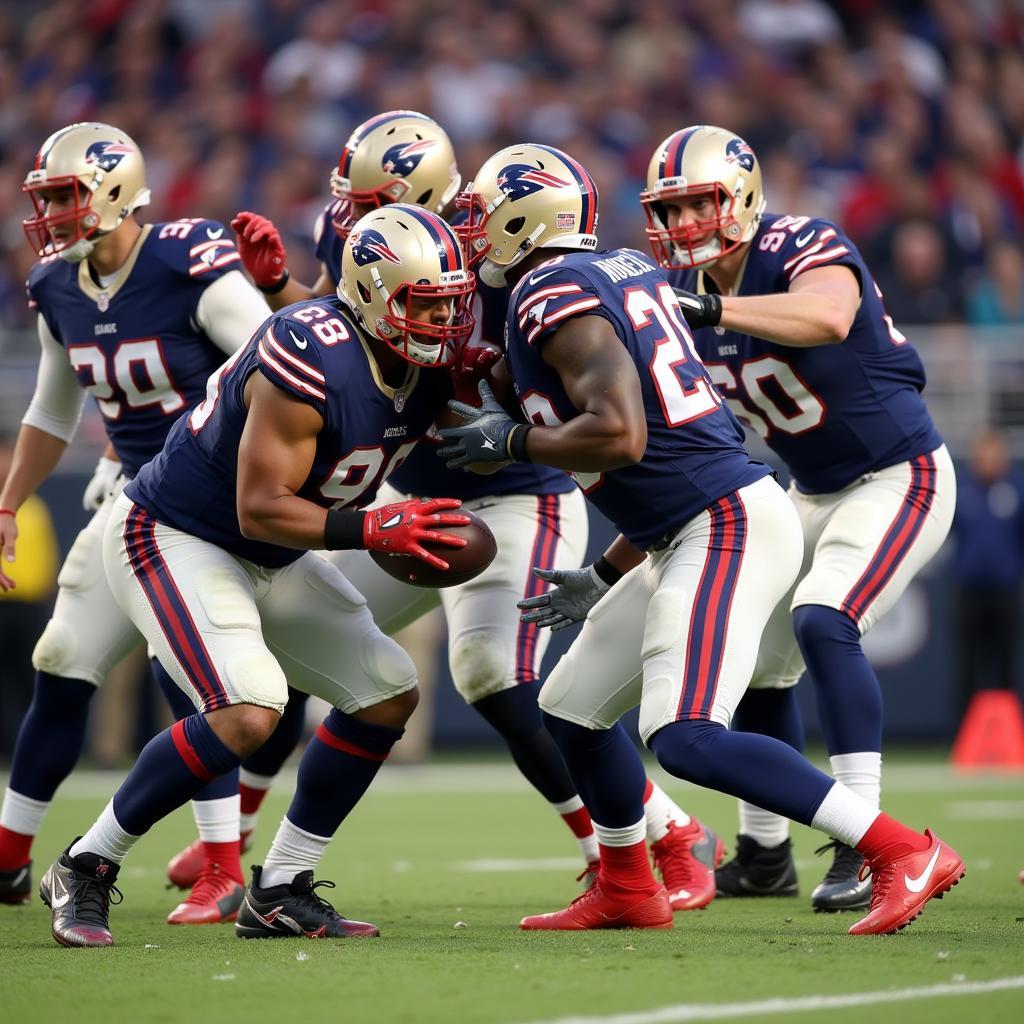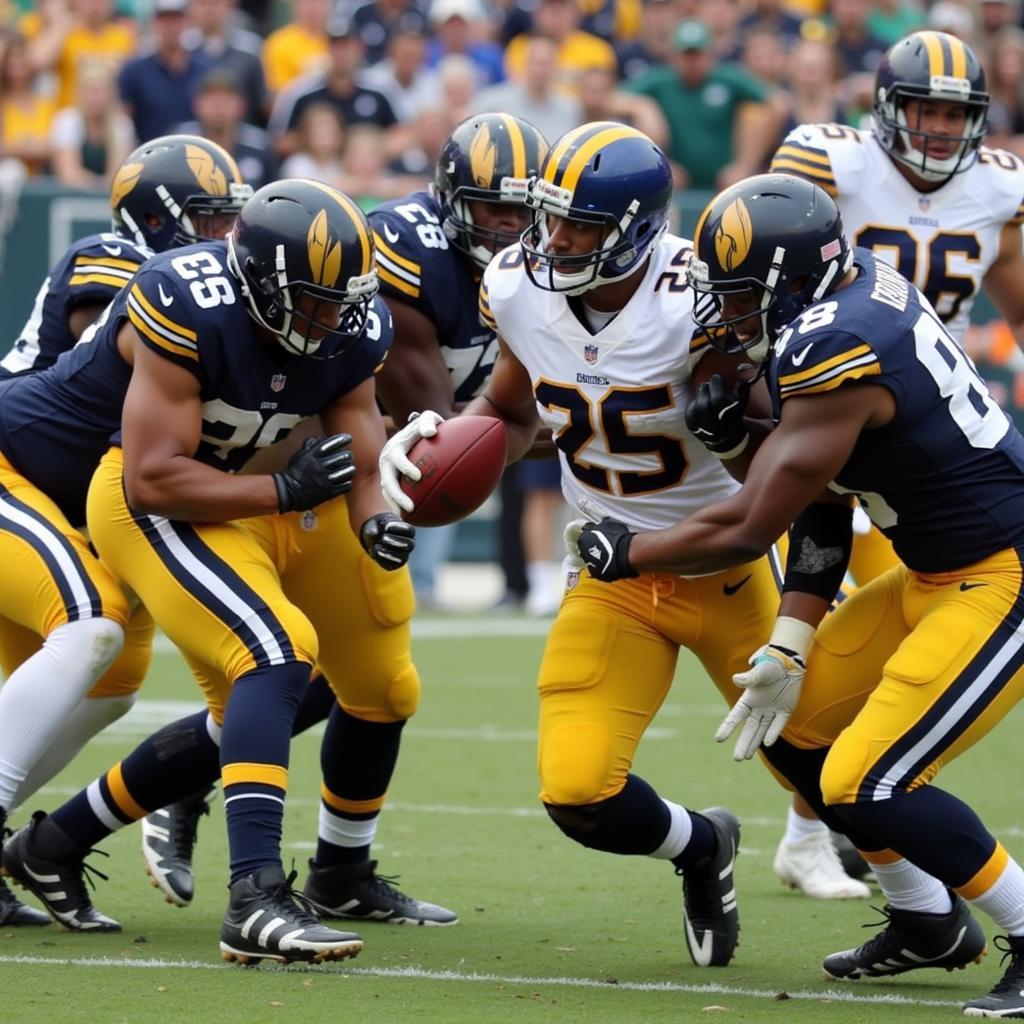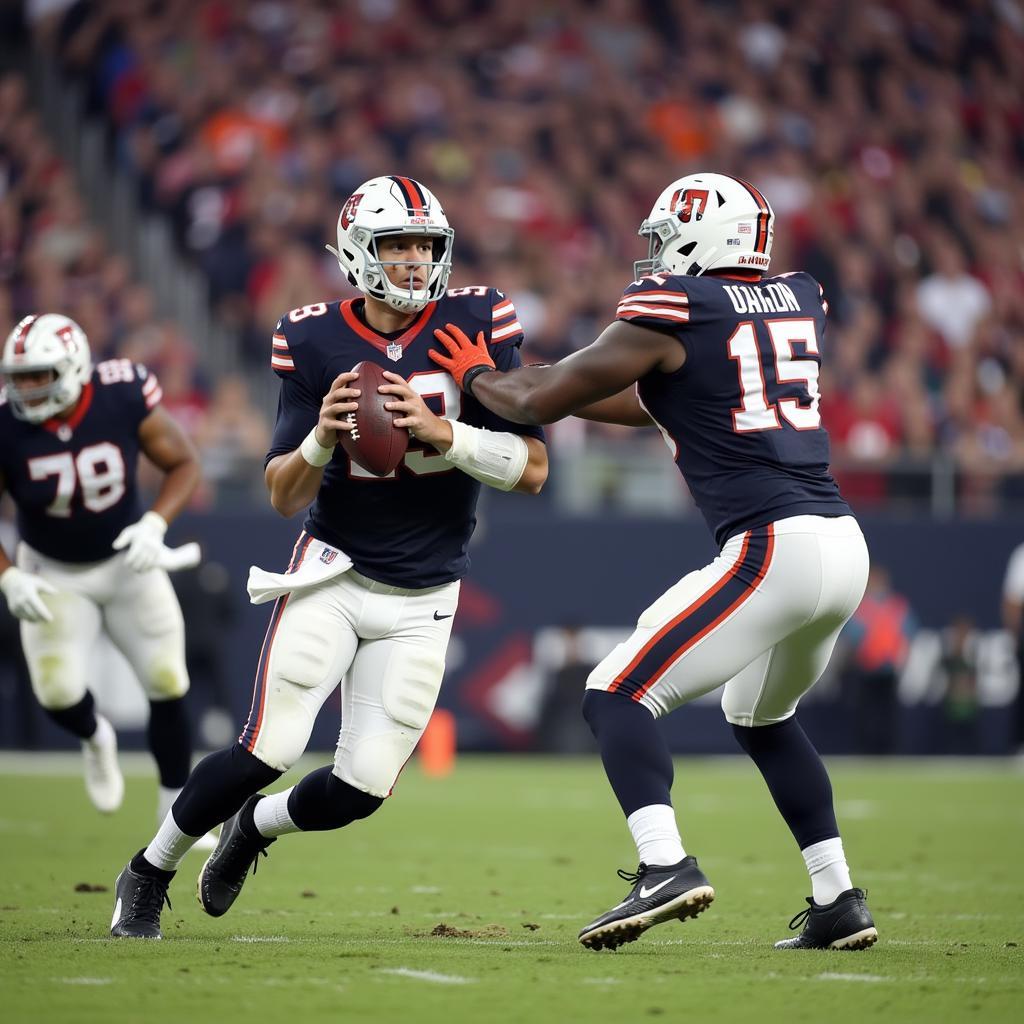Bunch Formation Pass Plays offer a dynamic and versatile approach to attacking defenses in football. By grouping three receivers close together, offenses can create confusion and mismatches, opening up opportunities for big plays downfield. This article delves into the intricacies of bunch formation pass plays, exploring their benefits, strategic concepts, and how to effectively execute them on the field.
 Bunch Formation in Football
Bunch Formation in Football
Benefits of Bunch Formations
Bunch formations provide numerous advantages for offenses, including:
- Creating Traffic: The tight alignment of receivers creates confusion for defenders, making it difficult to navigate through traffic and maintain coverage responsibilities.
- Disguising Routes: Receivers can use a variety of releases and stems, making it challenging for defenders to anticipate their intended paths.
- Exploiting Mismatches: Bunch formations force defenses to declare their coverage schemes, potentially creating favorable matchups for the offense.
- Quick Passing Game: The proximity of receivers allows for quick throws and fast releases, putting pressure on the defense to react swiftly.
Strategic Concepts
Successful execution of bunch formation pass plays relies on several key concepts:
1. Receiver Alignment and Spacing
The alignment and spacing of receivers within the bunch are crucial for creating separation and disrupting coverage. Factors to consider include:
- Distance from the Tackle: A tight bunch closer to the tackle can cause congestion and force outside leverage for defenders.
- Receiver Depth: Varying the depth of receivers within the bunch adds another layer of complexity for the defense.
- Spacing Between Receivers: Optimal spacing allows receivers to release without colliding while still presenting a condensed formation to the defense.
 Challenges of Defending Bunch Formation
Challenges of Defending Bunch Formation
2. Route Combinations
Bunch formations offer a wide array of route combinations designed to attack different areas of the field and exploit various coverages:
- Vertical Concepts: Deep routes, such as posts, corners, and fades, can stretch the defense vertically and create opportunities for big plays.
- Horizontal Concepts: Out routes, comebacks, and slants exploit the width of the field and force the defense to defend sideline-to-sideline.
- Combination Routes: Blending vertical and horizontal concepts adds complexity, forcing defenders to make quick decisions with conflicting responsibilities.
3. Timing and Rhythm
Precise timing and rhythm between the quarterback and receivers are essential for successful bunch formation pass plays. Receivers must run their routes with consistency, ensuring they reach their landmarks at the designated time.
Executing Bunch Formation Pass Plays
Effective execution hinges on several factors:
- Quarterback Reads: Quarterbacks must quickly decipher the defensive coverage and identify the most favorable matchup.
- Receiver Releases: Receivers need to utilize different release techniques, such as inside and outside releases, to gain separation from defenders.
- Route Running Precision: Running crisp routes with proper depth and timing ensures the play develops as intended.
 Successful Bunch Formation Pass Play
Successful Bunch Formation Pass Play
Conclusion
Bunch formation pass plays provide offenses with a powerful tool to create mismatches, exploit defensive weaknesses, and generate explosive plays. By understanding the strategic concepts and executing with precision, teams can unlock the full potential of bunch formations and dictate the tempo of the game. To further enhance your understanding of offensive strategies like the 5 wide offense, explore our other insightful articles on VNG Game.





